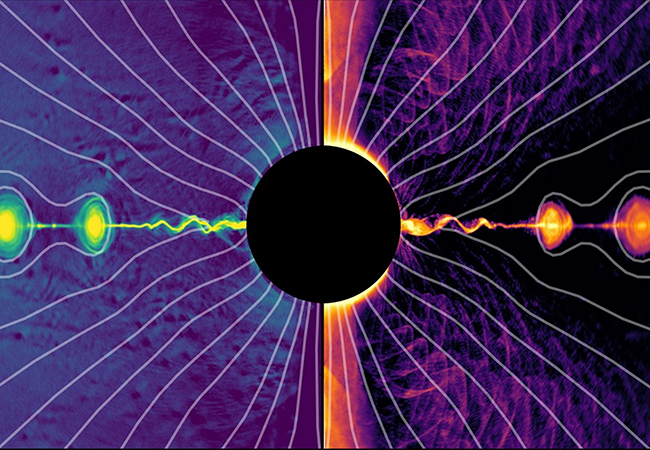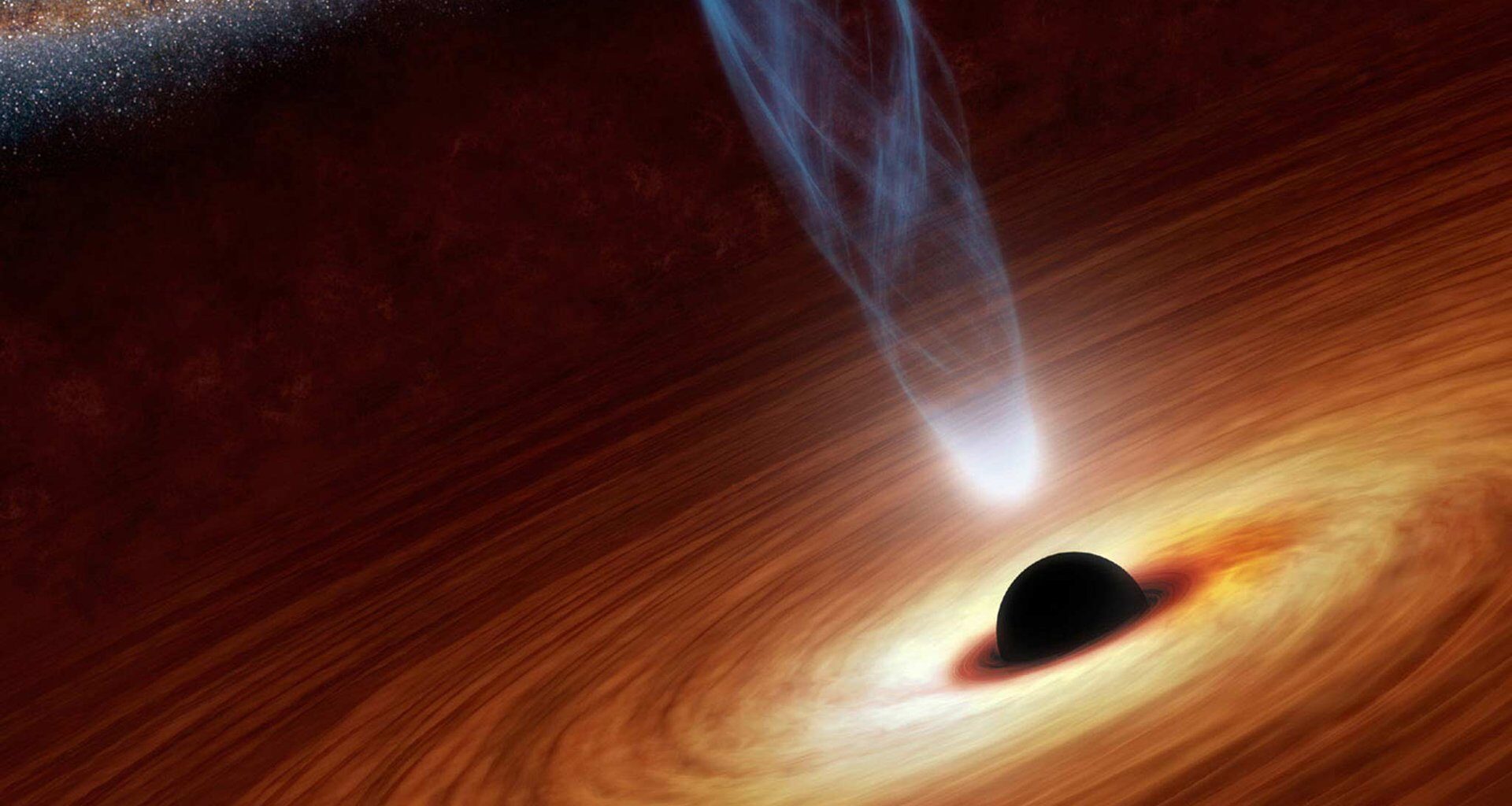It is an established scientific fact that most galaxies in the Universe have a supermassive black hole (SMBH) at their center, leading to what is known as an Active Galactic Nucleus (AGN). Also known as “quasars,” AGNs are notable for how they emit so much light and radiation that they temporarily outshine all of the stars in their disk. In 2019, scientists with the Event Horizon Telescope (EHT) collaboration produced the very first image of an SMBH, which resides at the center of the M87 galaxy. However, about a century before this historic accomplishment was made, an astronomer detected a powerful jet coming from the center of this very same galaxy.
The discovery was made by Heber Doust Curtis, an American astronomer who worked at the Lick Observatory in the late 19th and early 20th centuries. He was also one of several advocates who claimed that nebulae observed in the night sky were actually distant galaxies. Since then, astronomers have studied examples of these jets emanating from the SMBHs at the cores of many massive galaxies. Thanks to a team of theoretical physicists from Goethe University and their advanced computer simulations, astronomers can now say with confidence what causes these jets to form.
Due to their powerful gravity and rotational energy, SMBHs cause gas and dust to form disks around them that is accelerated to relativistic speeds (close to the speed of light). In some cases, this gas and dust is ejected from the disk around the poles, forming “relativistic jets” that can extend for thousands of light-years. Building on the success of the EHT and other campaigns to image the M87 SMBH and its jet, the team from Goethe University developed a numerical code that describes how black holes transform their rotational energy into such ultra-fast jets. Their research is described in a study that recently appeared in The Astrophysical Journal Letters.
 Illustration showing how SMBHs accelerate plasma along equatorial plane and spin axis to relativistic speeds, forming jets powered by the Blandford–Znajek mechanism. Credit: Meringolo, Camilloni, Rezzolla (2025)
Illustration showing how SMBHs accelerate plasma along equatorial plane and spin axis to relativistic speeds, forming jets powered by the Blandford–Znajek mechanism. Credit: Meringolo, Camilloni, Rezzolla (2025)
The SMBH that lies at the center of M87 weighs in at a whopping six and a half billion solar masses and spins rapidly on its axis. The rotational energy this creates powers the relativistic jet that extends for over 5,000 light-years. These jets disperses energy and matter throughout the intergalactic medium can also influence the evolution of other galaxies. For decades, astronomers have theorized that energy can be extracted from rotating black holes via strong magnetic fields (aka. the Blandford–Znajek mechanism) has been the most preferred description of how astrophysical jets form.
Led by Prof. Luciano Rezzolla, the team from Institute for Theoretical Physics at Goethe University created a numerical code designed to track the motion of plasma and the behavior of electromagnetic fields around Kerr (rotating) black holes. Their code, named the Frankfurt Particle-In-Cell code for black hole spacetimes (FPIC), combines the Blandford–Znajek mechanism with a process where magnetic field lines break and reassemble, causing magnetic energy to convert into heat, radiation, and eruptions of plasma.
“Simulating such processes is crucial for understanding the complex dynamics of relativistic plasmas in curved spacetimes near compact objects, which are governed by the interplay of extreme gravitational and magnetic fields,” Dr. Claudio Meringolo, who led the code development, said in a Goethe University press release. Using this code, the team ran simulations on the Goethe supercomputer at Frankfurt and the Hawk supercomputer at Stuttgart. These simulations modeled how a black hole’s powerful gravity influences the evolution of charged particles and magnetic fields in accordance with Maxwell’s Equations and Einstein’s Theory of General Relativity.
The simulations revealed intense reconnection activity in the equatorial plane of the SMBH that led to the formation of condensed energetic bubbles of plasma (plasmoids) moving at relativistic speeds. This was followed by the generation of negative energy particles that powers the jets, plasma eruptions, and other extreme phenomena associated with SMBHs. “Our results open up the fascinating possibility that the Blandford–Znajek mechanism is not the only astrophysical process capable of extracting rotational energy from a black hole, but that magnetic reconnection also contributes,” said co-author Dr. Filippo Camilloni.
According to Rezzolla, their results show how sophisticated numerical codes could lead to a better understand of what happens near a black hole:
With our work, we can demonstrate how energy is efficiently extracted from rotating black holes and channeled into jets. This allows us to help explain the extreme luminosities of active galactic nuclei as well as the acceleration of particles to nearly the speed of light. At the same time, it is even more rewarding to be able to explain the results of these complex simulations with a rigorous mathematical treatment — as we have done in our work.
Further Reading: Goethe University, The Astrophysical Journal

